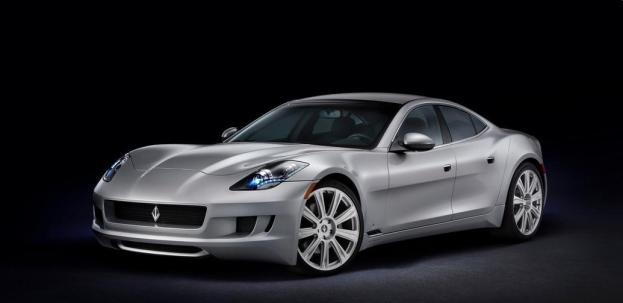 With Fisker Automotive crossing the event horizon, there will be plenty of speculation about what was wrong with the company and its car, the plug-in hybrid Karma. One company isn’t just playing Monday Morning Quarterback.
With Fisker Automotive crossing the event horizon, there will be plenty of speculation about what was wrong with the company and its car, the plug-in hybrid Karma. One company isn’t just playing Monday Morning Quarterback.
Recently, VL Productions announced plans to build the Destino, a Karma with a V8 engine replacing the 2.0-liter turbocharged four-cylinder and electric motors. Despite Fisker’s seemingly imminent demise, VL says it will start converting existing Karmas.
Bob Lutz, former General Motors product czar and current VL partner, told WardsAuto that the company obtained 20 Karma rolling chassis or “gliders” before production shut down.
The Destino will use the 6.2-liter supercharged V8 from the Cadillac CTS-V, which produces 556 horsepower and 551 pound-feet of torque. It’s basically a detuned version of the LS9 V8 from the Chevrolet Corvette ZR1, which Lutz and partner Gilbert Villarreal had originally envisioned for this fast four-door.
Lutz told Wards that the switch was due to anticipated customer demand for an automatic transmission. VL couldn’t find an automatic that was compatible with the LS9, but GM was able to supply a six-speed auto for the CTS-V engine.
Lutz estimates that VL will be able to convert Karmas into Destinos for $85,000 to $90,000. That puts the total price for a Destino at around $185,000 to $190,000.
Despite the cost, and the insecurity that comes with a newly-orphaned car without its original factory warranty, Lutz says VL has received hundreds of inquiries, and would consider buying Karmas from dealers looking to liquidate their stock to meet demand.
VL would even consider building Karma chassis itself, although Lutz believes that would be a “logistics hassle.”
“If Fisker disappears, it won’t affect us,” Lutz told Wards.

If VL is successful, it might make for an interesting commentary on what car buyers really think of luxury plug-in hybrids. It will show analysts that people like the car, but not the powertrain.
Could a V8 improve the Fisker Karma? Tell us in the comments.


